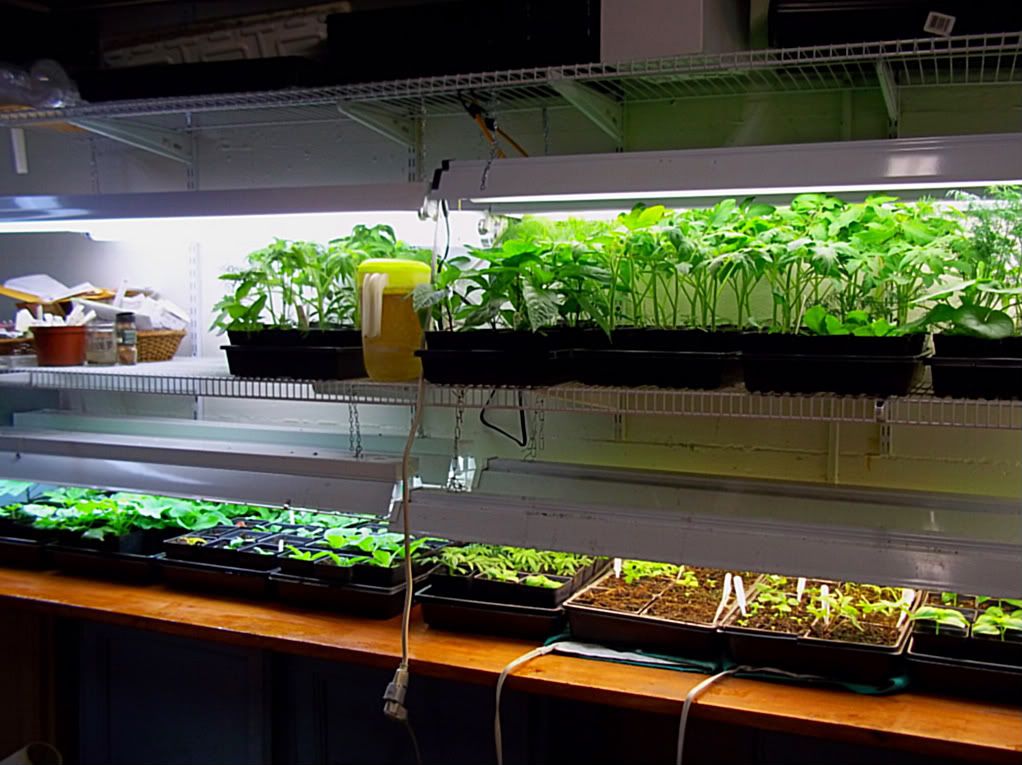If you read back starting at the beginning of this thread, some of these questions have already been answered, but I'll try again.Aida wrote:Hi rainbowgardener!
I have three questions:
1. Is it recommended to start ALL seeds in containers? I would really prefer to start my seeds in containers, as it seems that everytime the little seed packet says "start outdoors" I dig up and prepare a huge patch, only to have a handful even sprout.
2. Are the lights necessary? Can I just get any old fluroscent tubes at a hardware store? How long do they need to stay under these lights, usually?(I'm interested in sunflowers, strawberries, tomatoes, radishes)
I'm asking because I have no garage or attic to set up a whole chain-pulled light system, so I would have to resort to keeping the containers in my room, the lights propped up on books or whatever.
3. I'm really confused when it comes to compost, blood meal, bone meal, fertilizers, etc. I've never used anything like that, I don't have a compost pile, and no time to start one(I need to plant!). Do you have any articles explaining this? In terms of seed starting, can I buy these things at a hardware store? How much of what in each container?(I think I'll use yoghurt cups and nothing much bigger, and then transplant outside once they outgrow those)
Jeez louise, I'm sorry for bombarding you with all of this. If anyone else can answer, please do!
Thanks a ton in advance.
1. Not all seed. It depends on what. Some things like carrots and root crops generally, do not transplant well and really need to be direct seeded in the ground. Some things that are quick growing and cold tolerant, like lettuce, there's not a whole lot of advantage to starting them indoors (and a little disadvantage in having to harden them off), so they typically are direct seeded, but can be started indoors if you want to. Advantage of starting indoors is that they can be babied more, more protection, perfect conditions.
2. Some supplemental light is pretty much necessary. This can be ordinary shop lights with fluorescent tubes. But the lights need to be just a couple inches over the plants. "sunflowers, strawberries, tomatoes, radishes" Strawberries are not started from seed, they are very difficult that way. Once danger of frost is past, look in garden stores or on line and buy plants. They are very cheap, like 25 plants for $12 and you only ever have to buy them once. Radishes are one of those root crops that you really need to plant directly in the ground. They are very fast and easy that way. Sunflowers are quick growing and don't really need to be started indoors, but can be. Tomatoes and peppers are the most commonly indoor started. They will end up being indoors under the lights, 8 - 10 weeks, depending on your climate. Your lighting set up doesn't need to take up very much room. If you have a spare closet somewhere, that works great as a little seed starting room.
3. Compost, blood meal, etc are soil additives for outdoors. For indoors all you need is basic potting soil with Miracle Gro already in it (which is the commonest way potting soil is sold).

